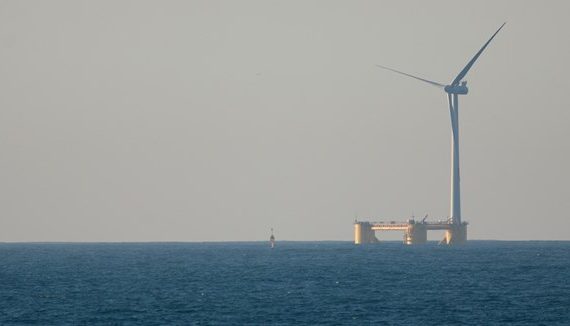The UK’s renewable energy sector is well placed to take advantage of the expected boom in floating offshore wind technology, a new study suggests.
Writing in the Renewable and Sustainable Energy Reviews journal, researchers from the University of Plymouth highlight that huge advances in platform technology have taken place over the past two decades.
This has led to a shift from early designs, which reflected those used in the oil and gas industry and focused predominantly on platform stability, to more specialised designs introduced in significant part driven by the need to reduce costs.
These bespoke designs are being developed alongside a more holistic view of the platform’s place within the local environment, including aspects such as local economy, infrastructure, and particularly impact on the marine environment.
For the sector’s potential to be fully maximised, however, researchers say there are still a number of challenges that need to be overcome in terms of design, cost, infrastructure and maintenance.
They also add that greater consideration of – and investment in – a UK-based supply chain will be essential to ensure the UK’s economy as a whole benefits from the floating offshore wind revolution.
The study, by researchers from the University’s Centre for Decarbonisation and Offshore Renewable Energy (C-DORE), highlights that the floating offshore wind industry – which is just starting to reach commercial success – is set to dramatically expand.
Between now and 2050, the global floating offshore wind sector will need to grow in installed capacity by a staggering 2000%, from the current 121MW to around 264GW.
To try and meet that demand, most platforms currently being tested at sea fit into four categories – spars, which have a single vertical cylinder with ballast at the bottom; semi-submersibles, consisting of three to five vertical cylinders connected together, with the turbine in the centre or above one of the columns; tension leg platforms, which rely on taut mooring lines connected to the seabed for stability; and barges, which are wide, shallow platforms.
Platforms such as this are expected to form the basis of the sector’s growth in UK waters, which will be centred around Scotland and the Celtic Sea, with the Crown Estate scheduled to open its next leasing round for the latter in 2023.
Dr Emma Edwards, Research Fellow in ORE Hydrodynamics and the study’s lead author, said: “The potential sites for UK floating offshore wind installations are quite different to those found elsewhere in the world. In the United States and Japan, for example, the waters where these platforms could be sited are up to 1,000m deep whereas the target sites in the UK are only around 60-120m. That has led to the focus on two specific types of platform we are now seeing tested at sea—semi-submersibles and barges – as they seem particularly well suited to the UK’s ocean and seabed conditions. Over the next few years, it will be critical that these designs continue to be improved – both from an energy generation and cost perspective – to meet the UK’s ambitious 2030 and 2050 Net Zero goals.”
The University of Plymouth leads the Supergen Offshore Renewable Energy (ORE) Impact Hub, recently awarded £7.5million to accelerate the impact of current and future ORE devices and systems and to drive the UK towards its net zero commitments.
The state-of-the-art facilities on its campus, including the UK’s Floating Offshore Wind Turbine Test Facility (UKFOWTT), are unrivalled across the ORE sector making it uniquely positioned to maximise opportunities in the Celtic Sea.
Professor Deborah Greaves OBE FREng, Director of the Supergen ORE Impact Hub and a co-author on the study, added: “The UK is a world leader in the development of offshore wind technology, and it forms the backbone of the Government’s future plans for energy generation and net zero. That creates an unprecedented economic opportunity, both for the companies at the forefront of the technology’s development as well as the engineering sector, ports and communities that will be essential to its infrastructure. This study shows the progress being made in the design of floating offshore wind technology is moving at pace, and it is critical these other sectors are factored in as plans are scaled up for the technology’s future development and deployment.”



























